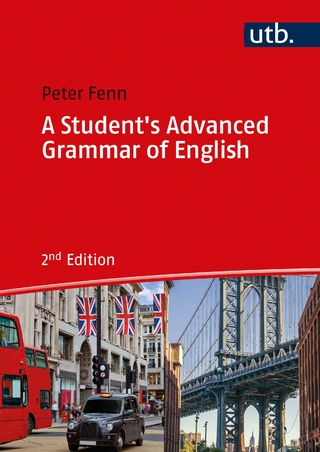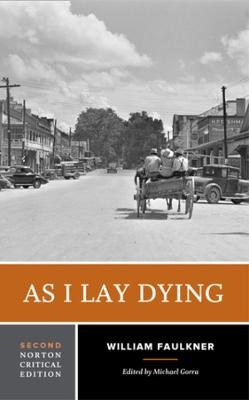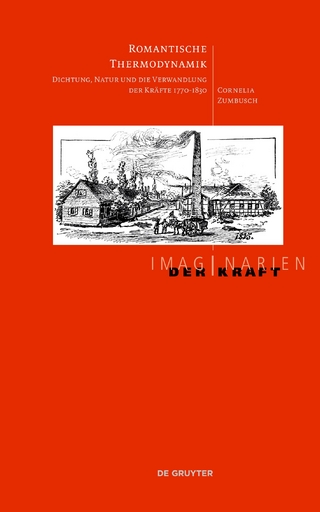
A History of Modern Poetry
The Belknap Press (Verlag)
978-0-674-39947-1 (ISBN)
There have been many books on early modernist poetry, not so many on its various sequels, and still fewer on the currents and cross-currents of poetry since World War II. Until now there has been no single comprehensive history of British and American poetry throughout the half century from the mid-1920s to the recent past. This David Perkins is uniquely equipped to provide; only a critic as well informed as he in the whole range of twentieth-century poetry could offer a lucid, coherent, and structured account of so diverse a body of work.
Perkins devotes major discussions to the later careers of the first Modernist poets, such as Eliot, Pound, Stevens, and Williams, and to their immediate followers in the United States, E. E. Cummings, Archibald MacLeish, and Hart Crane; to W. H. Auden, Dylan Thomas, and the period style of the 1930s; to the emergence of the New Criticism and of a poetry reflecting its tenets in William Empson, John Crowe Ransom, Allen Tate, John Berryman, and Robert Lowell, and to the reaction against this style; to postwar Great Britain from Philip Larkin and the “Movement” in the 1950s to Ted Hughes, Charles Tomlinson, and Geoffrey Hill; to the theory and style of “open form” in Charles Olson and Robert Duncan; to Allen Ginsberg and the Beat poetry of the 1960s; to the poetry of women’s experience in Sylvia Plath and Adrienne Rich; to the work of Black poets from Robert Hayden and Gwendolyn Brooks to Amiri Baraka; and to Elizabeth Bishop, W. S. Merwin, A. R. Ammons, John Ashbery, and James Merrill.
Perkins discusses some 160 poets, mentioning many others more briefly, and does not hesitate to explain, to criticize, to admire, to render judgments. He clarifies the complex interrelations of individuals, groups, and movements and the contexts in which the poets worked: not only the predecessors and contemporaries they responded to but the journals that published them, the expectations of the audience, changing premises about poetry, the writings of critics, developments in other arts, and the momentous events of political and social history. Readers seeking guidance through the maze of postwar poetry will find the second half of the book especially illuminating.
David Perkins is John P. Marquand Professor of English Literature, Harvard University.
PART ONE. THE AGE OF HIGH MODERNISM 1 The Ascendancy of T. S. Eliot, 1925-1950 2 Eliot's Later Career "The Hollow Men" and Ash Wednesday. Four Quartets. 3 Modes of Modern Style in the United States E. E. Cummings. Archibald MacLeish. Robinson Jeffers. 4 Hart Crane "A Plate of Vibrant Mercury." The Bridge. 5 The Poetry of Critical Intelligence Sources and History of the Style. Metaphysical Wit. Samples of the Style. Laura Riding. Robert Graves. William Empson. John Crowe Ransom. Allen Tate. Yvor Winters. 6 The Period Style of the 1930s in England The Impact of Auden. Coming after the Modernists. Poetry as Thinking and Talking. The English Tradition. Freud, Marx, and Lawrence. Politics and Romantic Convention. Day-Lewis, MacNeice, and Spender. 7 W. H. Auden Auden in the 1930s. Long Poems of the 1940s. Poetry as Conversation. The Later Auden. 8 The English Romantic Revival, 1934-1945 The Beginnings of the Romantic Revival: Dylan Thomas, David Gascoyne, and George Barker. Edwin Muir. The War Years. PART TWO. THE RESURGENCE OF POUND, WILLIAMS, AND STEVENS 9 Reappraising the Modernists 10 Ezra Pound: The Cantos Components of the Texture. Ideograms. Incremental Repetition. Major Form. The Pisan Cantos. Paradiso. 11 The Impact of William Carlos Williams The Williams Lyric. The Theory of the Poem. Paterson and the Last Poems. 12 The Later Poetry of Wallace Stevens Harmonium. "Winter Devising Summer in Its Breast." The Theory of Poetry Is the Theory of Life." The Myth of a Sufficing Naturalism. The Major Poetry of the Final Phase. 13 Other Modernist Poets David Jones. Basil Bunting. David Ignatow. Louis Zukofsky and the Objectivists. PART THREE. POSTMODERNISM 14 The Postwar Period: Introduction The Concept of a Period Style. Poetry in the United States. The Development of Contemporary Poetry. 15 Robert Penn Warren, Theodore Roethke, and Elizabeth Bishop Robert Penn Warren. Minor American Poets and the Return of Romantic Values. Theodore Roethke. Elizabeth Bishop. 16 Breaking Through the New Criticism Richard Wilbur. Randall Jarrell. John Berryman. Homage to Mistress Bradstreet. The Dream Songs. 17 Robert Lowell Style as "Hardship." Life Studies. Lowell's Later Career. 18 In and Out of the Movement: The Generation of the 1950s in England The Movement. The Style of the 1950s. Orientations to an Audience. Roy Fuller, C. H. Sisson, and R. S. Thomas. Larkin and His Contemporaries. 19 English Poetry in the 1960s and 1970s Charles Tomlinson. Ted Hughes. Geoffrey Hill. Thom Gunn. 20 The Poetry of Ireland Austin Clarke, Patrick Kavanagh. Thomas Kinsella. John Montague and Michael Longley. Seamus Heaney. 21 Open Form Derivation from Pound and Williams. The Theory of Open Form. Syntax as Kinesis. Charles Olson. Robert Creeley. Denise Levertov, Edward Dorn, and Paul Blackburn. Robert Duncan. 22 Poetry in New York and San Francisco Frank O'Hara and the 'New York School." Minor Poets of San Francisco. The Countercultural Ethos. Allen Ginsberg. 23 Against "Civilization" A Shared Style. A Modal Poem. Robert Bly. James Wright. Galway Kinnell. W. S. Merwin. Gary Snyder. 24 Sylvia Plath, Anne Sexton, and Adrienne Rich Sylvia Plath. Anne Sexton. Adrienne Rich. 25 Black Poets of America Melvin Tolson. Robert Hayden. Gwendolyn Brooks. Amiri Baraka (LeRoi Jones). 26 Meditations of the Solitary Mind: John Ashbery and A. R. Ammons John Ashbery. The Nature of the Real. Unsaying What You Say While You Are Saying It. Reading Ashbery. A. R. Ammons. 27 The Achievement of James Merrill The Changing Light at Sandover. Merrill's Trilogy in Literary History. Readers versus the Ouija Board. 'The Book of Ephraim." Mirabell and Scripts for the Pageant. Acknowledgments Index
| Erscheint lt. Verlag | 29.5.2019 |
|---|---|
| Verlagsort | Cambridge, Mass. |
| Sprache | englisch |
| Maße | 140 x 210 mm |
| Gewicht | 816 g |
| Themenwelt | Geisteswissenschaften ► Sprach- / Literaturwissenschaft ► Anglistik / Amerikanistik |
| Geisteswissenschaften ► Sprach- / Literaturwissenschaft ► Literaturgeschichte | |
| Geisteswissenschaften ► Sprach- / Literaturwissenschaft ► Literaturwissenschaft | |
| ISBN-10 | 0-674-39947-1 / 0674399471 |
| ISBN-13 | 978-0-674-39947-1 / 9780674399471 |
| Zustand | Neuware |
| Haben Sie eine Frage zum Produkt? |
aus dem Bereich


